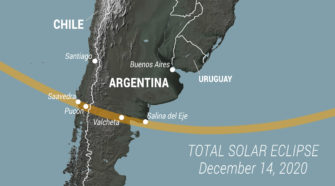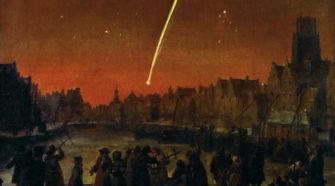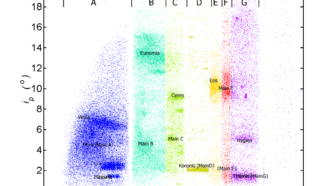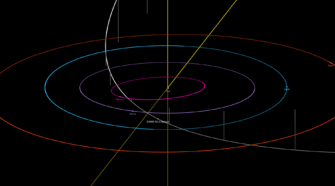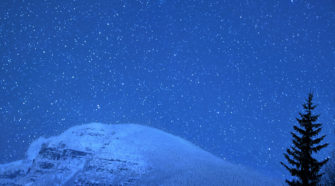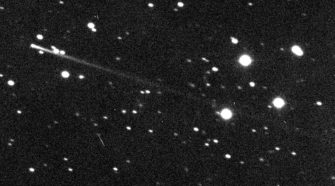Ice and Stone
This Week in History: December 13-19
DECEMBER 13, 2012: China’s Chang’e 2 mission encounters the Apollo-type asteroid (4179) Toutatis, coming to within 3.2 km of the asteroid. Chang’e 2 and other missions to the solar system’s “small bodies” are discussed in a previous “Special Topics” presentation. DECEMBER 14, 1807: A meteorite falls to the ground near Weston, Connecticut. An ordinary chondrite, …
Comet of the Week: The Great Comet of 1680
Perihelion: 1680 December 18.49, q = 0.006 AU This particular comet was undoubtedly one of the brightest comets of the 17th Century, but it is also one of the most important comets in history from a scientific perspective, and perhaps even from the perspective of overall human history. While there were certainly plenty of superstitions attached …
Special Topic: “Families” and Groups
A detailed examination of a catalog of orbital elements of comets and/or asteroids will reveal that the orbits therein are not entirely random; rather, there will appear to be various objects that seem to share similar orbits. While in some instances these resemblances may be coincidental, in many more cases the similarities are real, and …
This Week in History: December 6-12
DECEMBER 6, 1997: Jim Scotti with the Spacewatch program in Arizona discovers the Apollo-type asteroid now known as (35396) 1997 XF11. This asteroid created a major stir the following year when orbital calculations indicated a very close approach to Earth would be occurring in October 2028, and even though subsequent calculations with more data moved …
Comet of the Week: Lovejoy C/2013 R1
Perihelion: 2013 December 22.73, q = 0.812 AU I’ve mentioned in some of the previous “Ice and Stone 2020” presentations that, until the appearance of Comet NEOWISE C/2020 F3 earlier this year, the northern hemisphere had not had what could be considered a “Great Comet” in well over two decades. We did have a moderately bright …
Special Topic: “Active Asteroids”
Ice And Stone 2020 Week 50 Throughout “Ice and Stone 2020” we have primarily been concerned with the objects we call “comets” and the objects we call “asteroids,” which collectively are “planetesimals” left over from the formation of the solar system. From an observational perspective, “asteroids” are stellar in appearance whereas “comets” are diffuse and …

